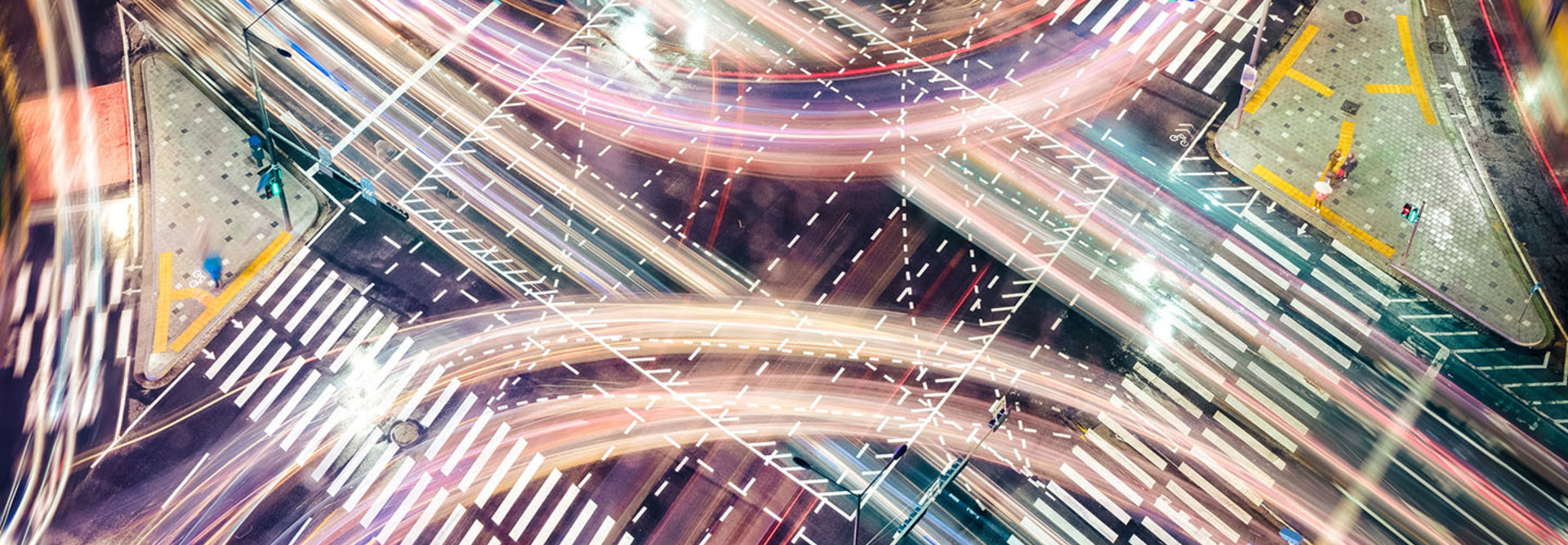The Future of Connected Transit Is More Than Just Driverless Cars
As states continue to invest in technology to create smart and connected cities, their focus will soon turn to connected transportation initiatives.
Connected transportation is much more than simply adding Wi-Fi to buses or subway stations. It is a necessary step to adding safety and efficiency to citizens' travels through a city.
So, what's the next step for our roadways? Here's what we see as next on the agenda for making connected transit initiatives safe, secure and successful.
SIGN UP: Get more news from the StateTech newsletter in your inbox every two weeks!
Connected Intersections Form a Smart Transit Backbone
Connected intersections are part of creating a truly connected city, as the intersections not only digitally transform the ways drivers, passengers and pedestrians share the road, but they also can make the city safer. The technology placed at traffic intersections can reduce crashes, interact with connected vehicles, reduce the time citizens spend at traffic signals and improve air quality by refining traffic flow. Each aspect of the connected intersection creates a specific benefit for the city and its citizens.
One key benefit of connected intersections is the ability to take data from vehicles passing through the intersection. The data not only controls the time a light is green or red, which helps minimize the time drivers wait at the light or allows pedestrians to cross the street safely, but it also monitors traffic safety.
Using a secure, anonymous ID of vehicles, connected intersection technology can identify pedestrians and wrong-way drivers, as well as analyze data from connected vehicles to inform all drivers of traffic incidents and traffic flows. For example, in Las Vegas, vehicle data is mapped to allow traffic operators and emergency responders to view connected vehicle information.
Additionally, the technology used at the intersections can connect with emergency responders and ensure that traffic stops when they are trying to get through during an emergency. Using monitoring devices that analyze data, the same technology can help emergency responders find citizens in need of help, acting as a GPS. This is especially helpful in rural areas where roadways and traffic stops are minimal.
The key to making the most out of a connected intersection, as well as connected transportation, is to understand the data stemming from the technology. At first glance, city officials tend to focus on Big Data and how the technology can automate processes for citizens and town officials, but there's more to it than simple data analysis.
When analyzed properly, data from connected intersection technology can increase safety for citizens, and as the technology advances, so will the data and outcomes. For example, data from connected vehicles, such as data on air bag deployment, can be used to alert emergency responders in real time.
Cities are laying the groundwork for future opportunities in connected transportation, such as autonomous vehicles, and can use tomorrow's technology to transform transportation today.
Safety Spurs the Future of Connected Transportation
Advanced technology will continue to produce flashy, autonomous vehicles, but the most important use of the technology is to increase safety. With connected transportation tech, cities can create safer roads, intersections and overall transportation for citizens.
New sensor technology on roadways and highway corridors in rural areas can monitor the weather and conditions of roadways to alert drivers of driving conditions before they arrive. Using fiber connectivity, this information can be shared quickly back to a data center and citizens can be alerted almost instantly.
Yet, fiber connectivity is not on every road and moving the data back to traffic management centers for processing can take too long for real-time decision-making. Data can be processed directly in the field where it originates to increase response times and safety measures. This form of in-field data processing, known as edge fog processing, enables city officials to collect and act on data in a flexible, repeating manner.
For example, officials and public safety departments in Las Vegas are relying on real-time data from citywide connectivity to ease traffic concerns and keep the roads safe for citizens and tourists.
In the near future, cities relying on connected transportation technology will not only be able to use the data to monitor their roads, but they will be able to share the data across other agencies, cities and states to keep more citizens safe. For example, agencies can share data from one intersection with bus systems in real time for true multimodal decision-making. Additionally, sharing incident and crash identification with police and emergency responders will allow public safety agencies to do their job more efficiently.
Connected Transit Security Takes a Front Seat
As connected transportation increases, keeping data secure will come to the forefront for state and local governments and more security protocols will need to be established.
The more data there is, the more vulnerable the devices are. While securing individual devices is important, it's just as important to implement a plan to follow when there is a security breach.
With the threat landscape, it's best for the public sector to work with the private sector to better understand security vulnerabilities, as well as how to react to them.









